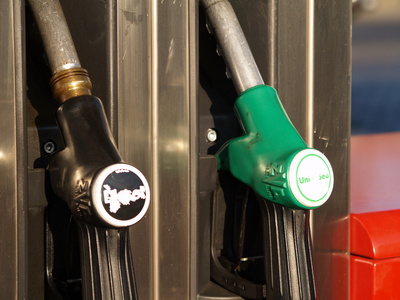
Every kind of matter, be it a solid, liquid or gas, has a given density. The density of a fluid defines mass per unit volume, denoted in milliliters or cubic meters. Different temperatures sometimes mean different densities for some liquids. Figuring out the density of a liquid allows you to find out more about it. In the case of fuel, knowing the density gives you the ability to find out its calorific values.
Take the graduated cylinder that will be used to pour the fuel; make sure the cylinder is clean and empty. Place the cylinder on the scale and record its weight. Consider using a digital science scale for precise results. Ensure the scale is properly calibrated before placing the cylinder on it; refer to the scale user’s manual for calibration instructions.
Carefully pour about 10 to 20 ml of fuel into the cylinder. You can get the fuel by siphoning it from a gas tank or pouring it out from a certified fuel container. Use a funnel to make sure none of the fuel spills out onto the floor or table around you. Place the cylinder on the scale and record the weight with pen and paper. Also record exactly how much fuel you placed in the cylinder by reading the meniscus line of the cylinder.
Use a calculator to subtract the empty cylinder weight in Step 1 from the weight recorded in Step 2. This calculation will give you the mass of the fuel liquid. If the empty cylinder weight was 150 grams and the weight of the filled cylinder is 166 grams, the total mass of liquid would be 16 grams. Write down this mass.
Use the calculator to divide the fluid weight, found in Step 3, by the volume from Step 2. For example, if you poured 16 ml of fluid in the cylinder, you will use 16 ml. If the total weight of the fluid is 16 grams, the calculation would be 16 g / 16 ml. This would give you a density of 1 g/ml.
Discard the fuel from the cylinder carefully and properly. You can pour the fuel back into a car tank or certified fuel container for future use. Be sure to clean out the cylinder thoroughly with water before another use.